
The Price Of A Hard Winter
April 8th, 2015
There are a few weedy little tracts near where I live owned by Algonquin college. As a rule they host no birds of any great interest. But this evening, walking home from dinner, I heard a distinctive buzzy "peent!" coming from one of those tracts. There are only two creatures in North America that make precisely that sound, and only one that makes it while on land: American Woodcock!
In fact there was more than one of them. Woodcocks are solitary, secretive and very wild birds, usually found in places where few people go. But this evening two, maybe three of them were crammed into a tiny parcel of undeveloped land amidst the suburbs. Not coincidentally, this article was recently shared on OFNC Facebook. Woodcocks are starving in Nova Scotia for lack of open ground to feed on. They can't dig up the grubs and worms they eat when the ground is still blanketed in snow.
I think and hope that things are a little less dire for them here. The ones I found might be waiting out the slow thaw at Shirley's Bay. (Michael and I went hiking there a few days ago and ended up regretting that we hadn't worn winter boots. Large swaths of it were clear, but far from all.) The tract is completely thawed and thus presumably they can find food and drink there. It's interesting, because I've looked at those bits of land now and then and thought "might as well develop them, they're of no great use to wildlife." Today I've been proven wrong. Tiny undeveloped islands of land sometimes do matter.
Here's hoping the thaw soon accelerates, and I soon hear the twitter of skydancing woodcocks above Rifle Road!
Signs Of Spring
March 25th, 2015
Many signs of spring lately in Ottawa, despite the continued wintry weather. A porcupine in a tree along Carling (every March it seems they come out there to gnaw on birch bark), two Red-Winged Blackbirds at the Hilda feeders, Ring-Billed Gulls back in the parking lots, and a lone Turkey Vulture soaring about Kanata.
...and, at my balcony feeder, goldfinches molting out of their drab winter colors into fluorescent yellow breeding finery!
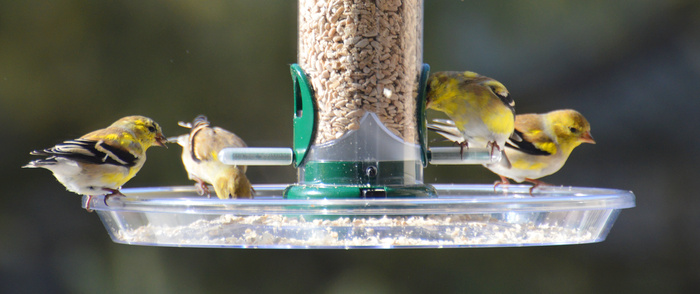
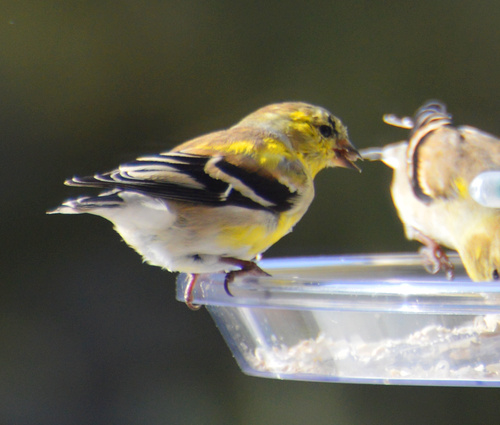
This guy seems to have molted his tail feathers all at once.
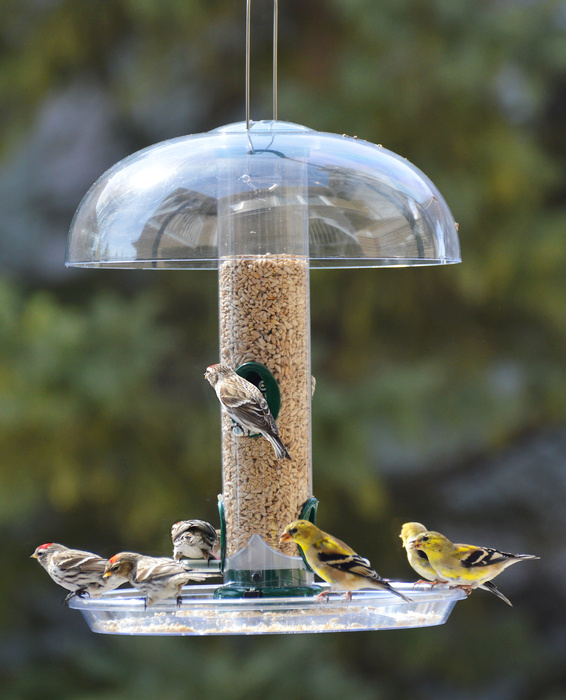
Common Redpolls at left and top. The two species have been faithful customers at my feeders all winter, often visiting by the dozens. The feisty and very hungry redpolls often edged out the goldfinches, but with spring coming, they will soon be heading back north and leaving our resident birds in peace.
A morning at South March (part 4)
July 27th, 2014
My last set of photos for awhile. If you should ever want to visit this beautiful forest, a trail map is available online. The main entrance is at Second Line and Klondike.
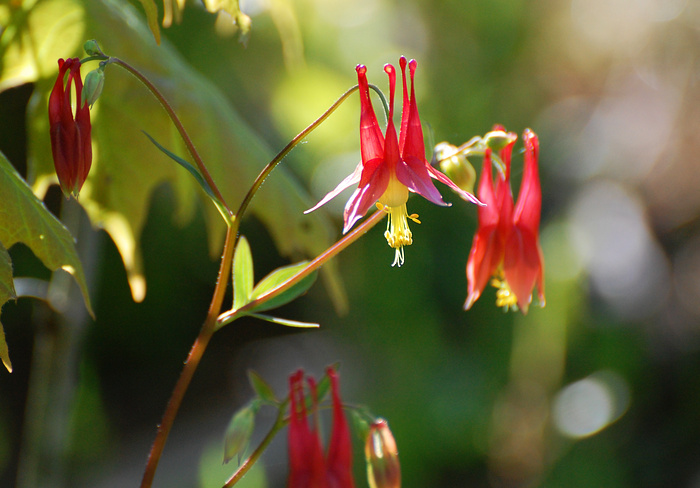
1680x1050 wallpaper
Generous sprays of Wild Columbine bloom in the exposed rocky areas of South March. It's one of my favorite wildflowers, and not one you see just anywhere.
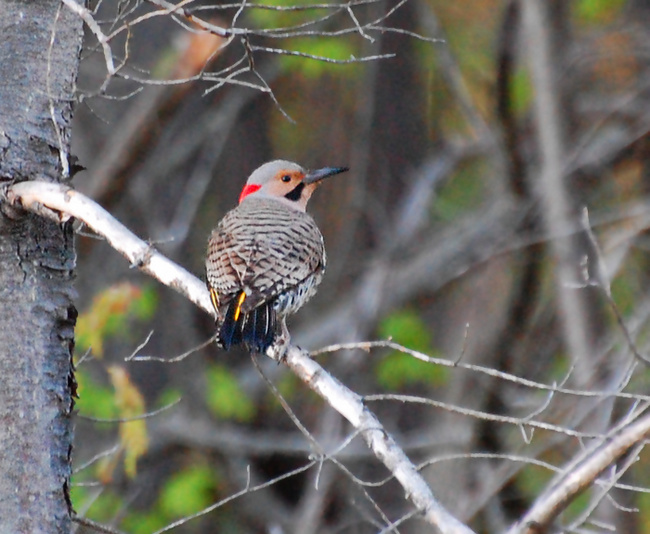
Northern Flicker.

That's white trillium behind the chipmunk--it positively blankets parts of the forest in spring.
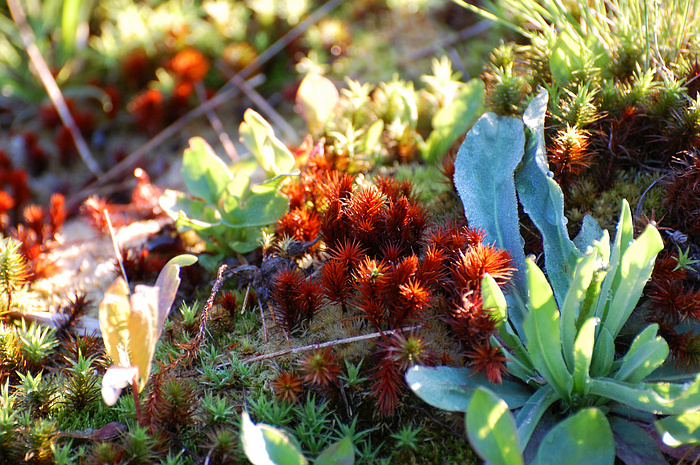
Unique vegetation on the sandstone barren north of Heron Pond. Nighthawks dive over this area in spring, and wild (edible) wintergreen berries grow in abundance. Unfortunately, this part of the forest, as well as a large chunk of the pond, is owned by a developer and could easily be lost.
A morning at South March (part 3)
July 22nd, 2014
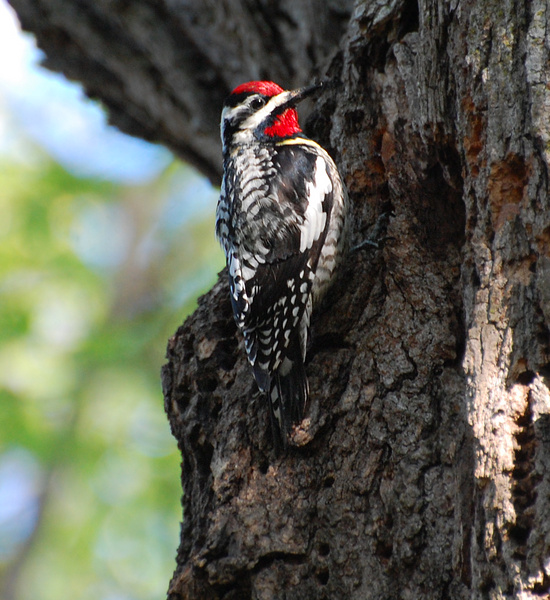
1680x1050 wallpaper
Another sapsucker. You can see some old sap wells in this tree, as well as larger holes probably created by other woodpeckers. Sapsuckers are distinguished from their more common cousins, Downy and Hairy Woodpeckers, by their bright red chins (only on adult males) and by the broad white stripes on their sides. Their call is a nasal mew.

1680x1050 wallpaper
Wood Thrushes are one of the most beautiful songsters of deep woods, but to actually see one is a rare treat. They are often elusive, and this is my first-ever photo. I think it's a female, actually. I could hear her mate singing nearby.
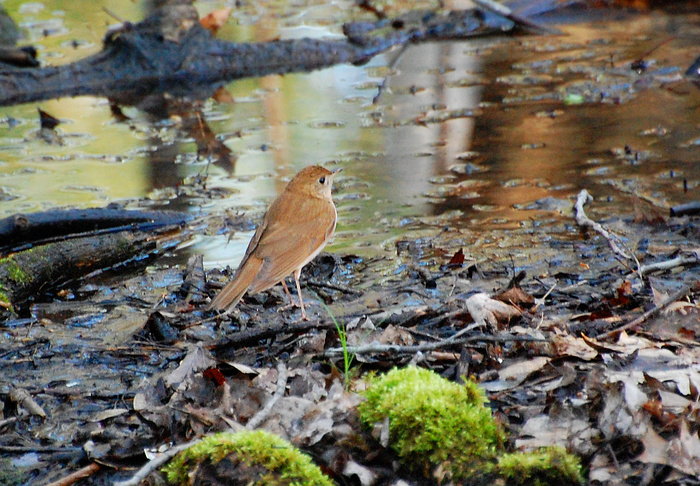
A Veery in veery heaven: rich, mossy wet woods. Veeries are thrushes with a descending waterfall of a song. In the wee hours of morning and evening, they and the Wood Thrushes duet in South March Conservation Forest. If you're lucky, a Hermit Thrush might join in and make it a trio (usually a distant Hermit Thrush as they have different tastes in habitat from the other two.) I feel anyone with even a passing love of nature should hear a thrush symphony at least once in their life.
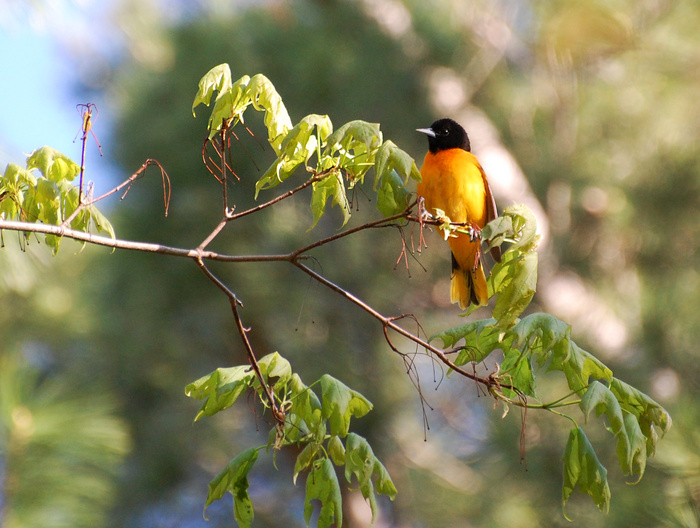
1680x1050 wallpaper
I tracked this "Baltimore Titmouse" (a Baltimore Oriole with a titmouse-like song) a ways into the woods, following his song up a hillside and into a sunny clearing, where he stood resplendent in the morning light.
A morning at South March (part 2)
July 17th, 2014
In most of Ottawa, Rose-Breasted Grosbeaks are something you see passing through in spring and fall, but South March has a robust breeding population. I'd never seen them like this before, though: both males and females were foraging on ground--not merely on the ground, but on the trail--right in front of me.
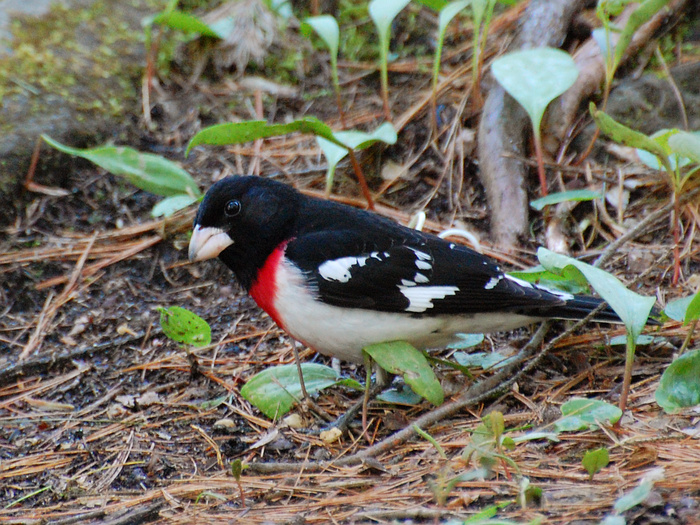
1680x1050 wallpaper

So were they looking for food? On a cold morning like that one, it makes sense that the only insects they could find would be on the ground. Or were they looking for nest material? Or were they gritting, perhaps--eating small pebbles for their gizzards? (Some finches come right out onto roadways to do that.) It was on a later day, walking through the same woods with my husband, that I discovered the answer by kneeling down and studying the earth where a grosbeak had been foraging: someone has been scattering birdseed on the trails.
And I'm of two minds about it. On the one hand it's making for some stunning views of songbirds that usually stay well up in the trees. (That day with Michael I saw a Scarlet Tanager, of all things, come to ground!) On the other hand, it seems questionably ethical to deliberately attract birds onto trails where fast-moving mountain bikes are the norm.
The more soberly attired female:

A morning at South March (part 1)
July 13th, 2014
This is it. A grand finale of sorts.
This post and the following few will contain the photos I took the day
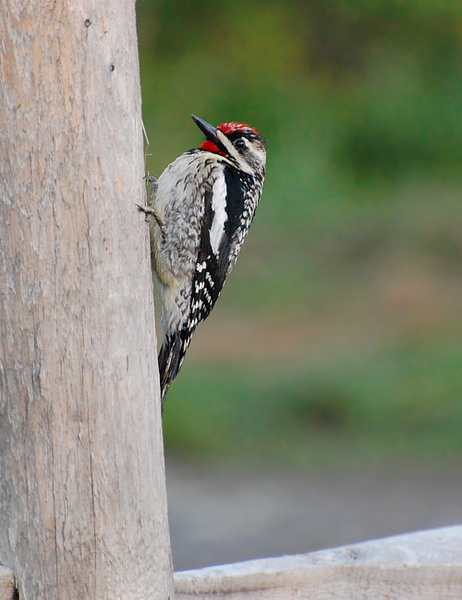
My day began at sunrise with this fellow, a Yellow-Bellied Sapsucker, at the entrance gate. To recap, sapsuckers are specialized woodpeckers who drill rows of tiny holes in living trees, then lick up the sap that wells out--they are not just a joke insult used by Yosemite Sam against Bugs Bunny :-) They're comparatively shy woodpeckers. Only in the early morning, I think, could I have chanced to see one in such an exposed location. He began to play hide and seek with me, as woodpeckers do (skittering around the post to try to stay out of my sight), and eventually flew off.
It was the sound that had announced him: a very loud, resonant clanging. Classically, woodpeckers drum on trees to declare territory, but if they can find something noisier to drum on, they might use that instead. This cheeky fellow got good results by banging on the "stoop and scoop" sign at the trail entrance!
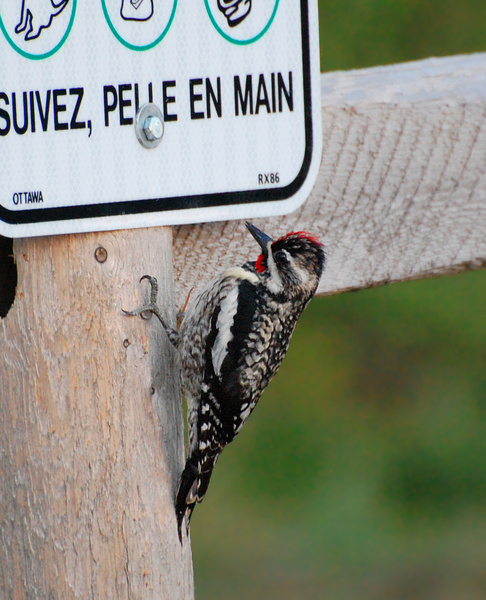
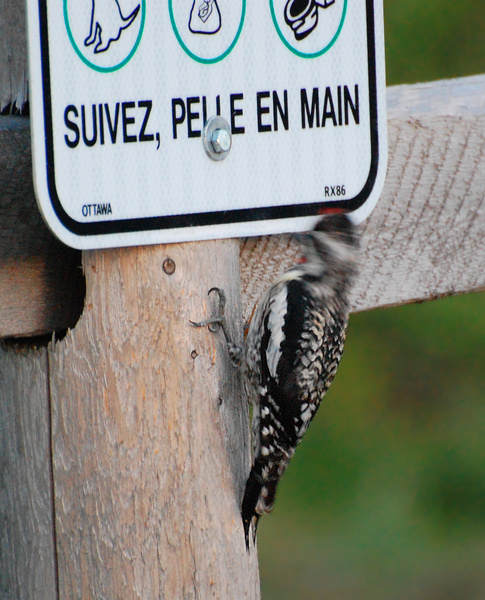
Living Color
July 7th, 2014
Some photos that I didn't get around to posting before.
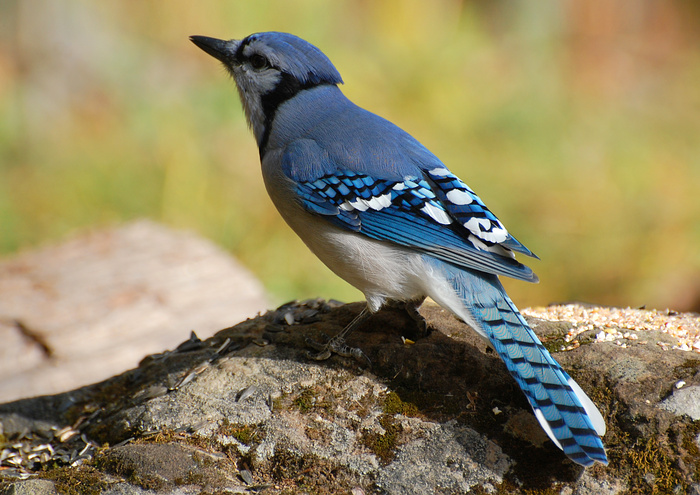
1680x1050 wallpaper
Blue Jays don't get their colors from pigment, but from the way their feather structures refract light. (In other words, if you crush a blue jay feather down to powder, it won't be blue anymore!) They can look amazing when the light strikes them just the right way. View at full res to appreciate--you can actually see a moire pattern on his tail.
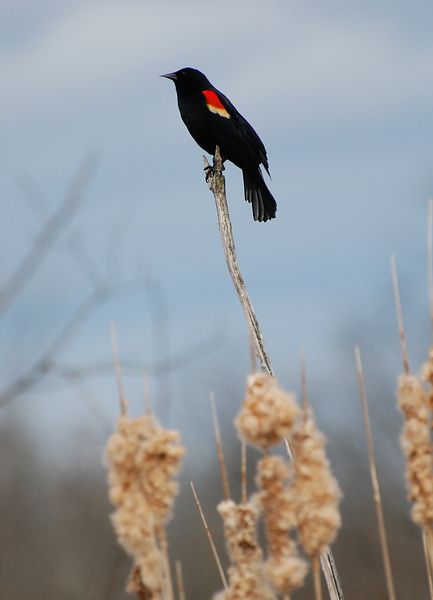
A breeding Red-Winged Blackbird in the Nortel wetland, photographed earlier this year.
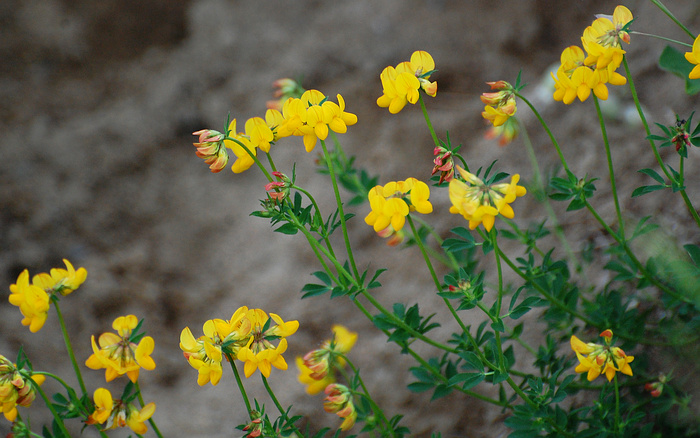
Birdsfoot trefoil. I think this very common wildflower brightens the landscape even better than dandelions.
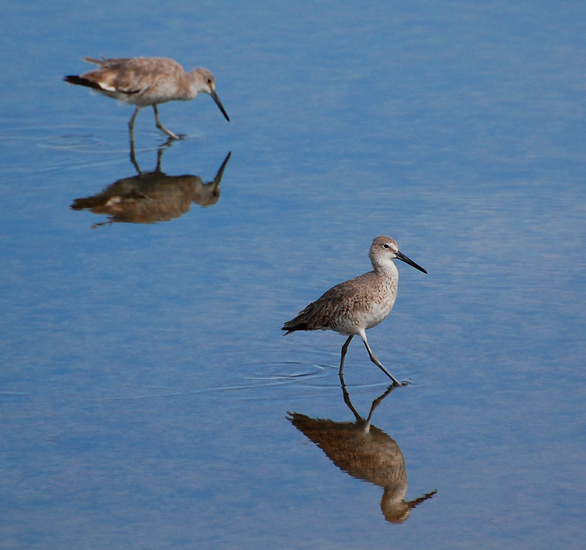
1680x1050 wallpaper
A pair of foraging Willet sandpipers. This one goes back to our Cape Hatteras vacation in summer 2012.
Wood Duck Pair
July 3rd, 2014
On the shore of Mud Lake, with a first-year male Red-Winged Blackbird foraging nearby. The drake was about to scratch an itch.
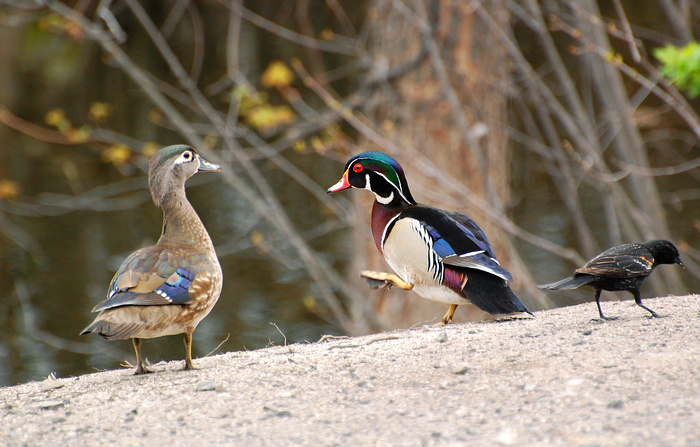
1680x1050 wallpaper
Carp Ridge
June 29th, 2014
Every year I'm struck anew by the strange beauty of Carp Ridge. It seems almost otherworldly to me.
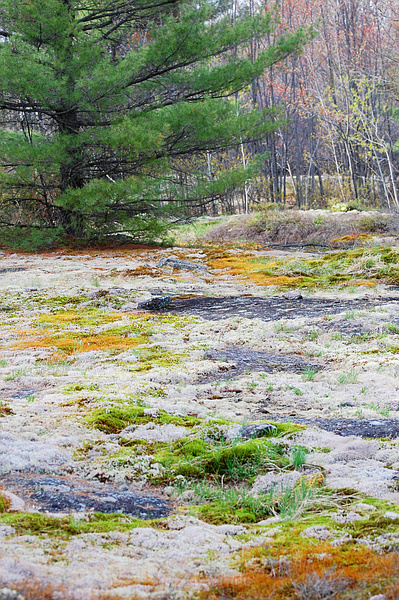
This rocky, lichen-encrusted landscape is one of the best places in Ottawa to find rare breeding birds, including towhees, whippoorwills, and nighthawks. It's also unfortunately one of the best places in Ottawa for finding deer ticks. I've often wondered if there is a connection between these two facts.
April's Kinglets
June 25th, 2014
I managed to capture a few Ruby-Crowned Kinglets on their way through this spring. Here they are, somewhat belatedly! This flock was along the trail at Nortel wetland. Notice the filaments on the feet and rump of the first bird: I think that's cattail fluff. They were foraging right next to the marsh and occasionally in it.
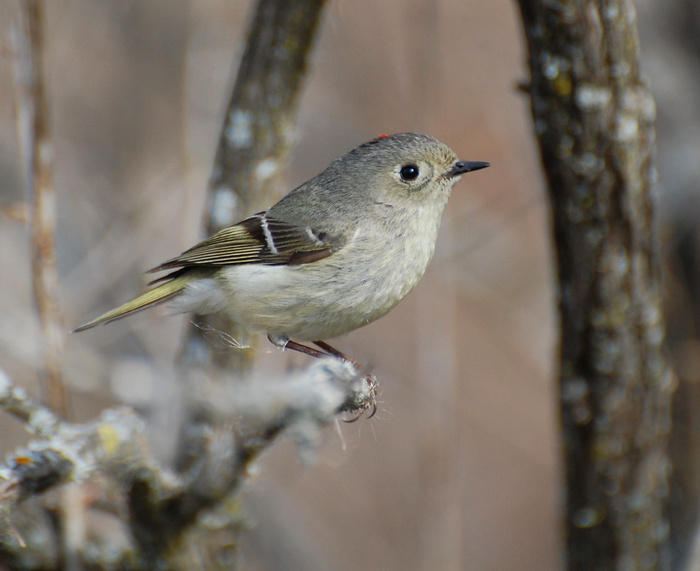
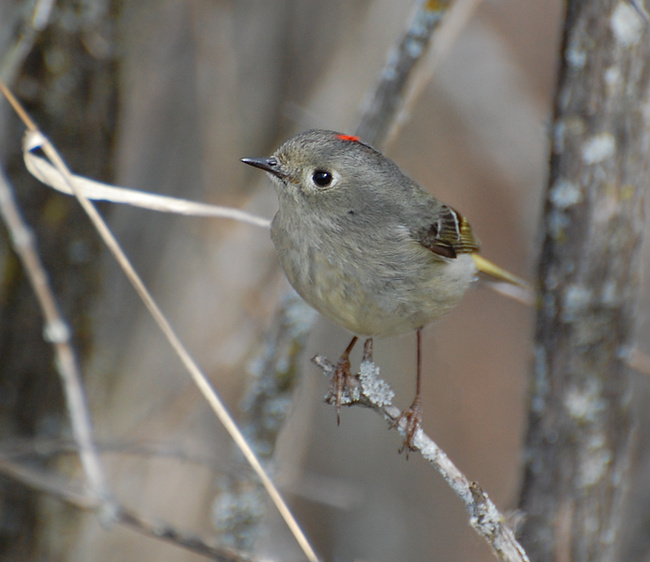
|
